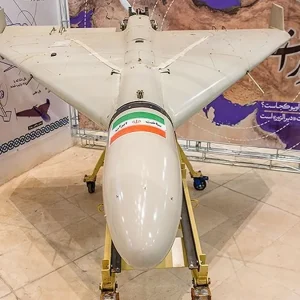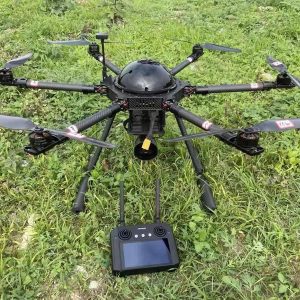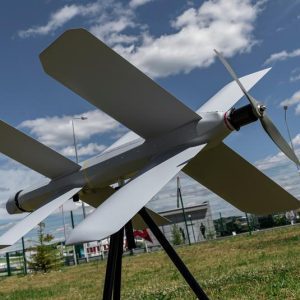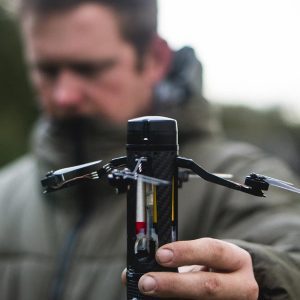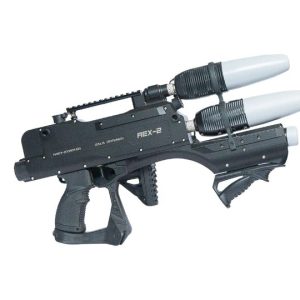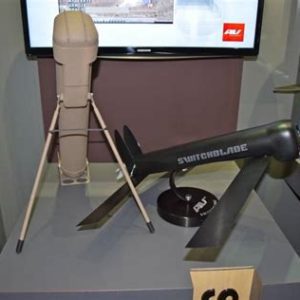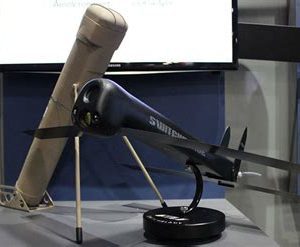Log in / Sign in
Login
Register
Wishlist
Please, enable Built-in Wishlist.
Wishlist
Please, enable Built-in Wishlist.
0
0
No products in the cart.
Return To Shop
Shopping cart (0)
Subtotal: $0.00
Free shipping over 99$
»
Drones | Anti Drone Systems | UAV
Drones | Anti Drone Systems | UAV
Armed Unmanned Aerial Vehicles (UAVs), often referred to as drones, are defined as aircraft designed to operate without a pilot on board. Armed UAVs carry ordnance and are remotely controlled by a human from the ground and are not fully autonomous.
Drones | Anti Drone Systems | UAV
Armed Unmanned Aerial Vehicles (UAVs), often referred to as drones, are defined as aircraft designed to operate without a pilot on board. Armed UAVs carry ordnance and are remotely controlled by a human from the ground and are not fully autonomous.
Categories of Drones
To better understand the types of drones, they are categorized in various ways. It could be based on the packaging or the kind of technology used to keep the UAV flying.
Another less familiar categories are the UAVs ability, size, and range. For each category, you will find different types of drones. Let’s proceed by adding more abbreviations in your drone vocabulary.
1. Based on Packaging
We’ve picked this first among other categories of drones that we’ll discuss because its drone types are easy to understand.
The following types are based on what’s included with your drone and how ready it is for flight. This also makes it easier for you to choose depending on how good you are as a flyer.
Have you ever heard/read the acronym “RTF”? How about “BNF”? Moreover, finally, “ARF”?
RTF (Ready to Fly)
RTF stands for Ready-to-Fly. It means that the drone can be ready to fly in a matter of minutes (there’s no pre-assembly required).
When we say ready to fly, we don’t mean that the drone is going to come flying out the box. That won’t happen.
Instead, it means you’ll able to fly it more or less after removing it from the box. More times than not, the only thing you’ll need to do is insert the battery.
Other times, you might need to charge up the battery. Besides that, there isn’t too much else that you’ll need to do to get into the air.
This type of UAVs is excellent for beginner flyers. That’s because they require no complicated setup or programming.
Just keep in mind that they can be more expensive than the other types we’re going to talk about in this article.
Here’s an example of an RTF drone. Now that we’ve got that out of the way let’s talk about the next kind: BNF.
BNF (Bind-N-Fly)
BNF stands for Bind-N-Fly. This means that the drone doesn’t come with a transmitter (the Blade 200 QX is a perfect example).
So if you already have a transmitter at home, then this can save you much money by not having to buy one. This is why BNF drones tend to be cheaper than what you might expect.
These drone types are better-suited for experienced flyers who may have already invested in a quality transmitter.
While it’s not guaranteed, you might be able to use transmitters from old quadcopters to fly your new BNF model. So in theory, you’d be able to use the same transmitter forever, but there’s no way to know for sure until you try it.
Since a beginner flyer probably won’t have a transmitter at home, it wouldn’t make much sense for them to buy a BNF model.
These models are better for people who have already flown before. Now let’s talk about the final type of quadcopter that you’ll encounter: the ARF.
ARF (Almost Ready to Fly)
ARF stands for Almost Ready to Fly. As you can probably guess, it means that this quadcopter comes almost ready to fly.
Typically, there will be something you’ll need to do first before getting into the air. It’s hard to say what that “something” is considering that the word “almost” can be entirely subjective.
One example of an ARF drone is one that comes with some parts missing. The parts missing can be the motors, body, or any number of things.
The point is, these drone types aren’t designed for beginners. They are better suited for people who understand how quadcopters work and how to build them.
If you want to experience the thrill of learning how to put together your machine, then the ARF model is the way to go. You will also opt for an ARF drone if you’re an existing flyer who wants more customization.
Picture it like a go-kart racer: beginners typically buy stock go-karts while more experienced riders build them from scratch. The drone community isn’t any different.
2. Based Technology Type
UAVs are continuously being developed along with the evolving technology. Regardless, of new developments, the main aspects of propulsion, autonomy, and size are still vital even in the future UAVs.
Those are the primary considerations in the different types of drones shown in this category.
Drones | Anti Drone Systems | UAV
Fixed Wing
Fixed Wing Drones are more like airplanes. They also look like such, particularly distinguishable by one rigid wing. Because of this rigid wing, they cannot do vertical lifts. Instead, they glide to high altitudes.
Not only can they reach higher heights but they can also stay in the air for hours. Some even last up to 16 hours. The gas-powered engines can fly for even more extended hours.
However, flying fixed wings may be quite a little tricky. It would require a little training first.As such, these are not the usual choice for a hobby. Instead, this kind of UAV is an option for the military when a manned flight is too risky.
Fixed wing drones are also used for aerial mapping, inspection, agriculture, construction, security, and surveillance.
Single Rotor
Single rotor UAVs are much like helicopters in structure and design. They have one main rotor for vertical lift and a smaller rotor at the tail for direction and stability.
The large rotor which serves more like a rotating wing enables the UAV to generate thrust more efficiently. This also helps single rotor UAVs to carry a heavier payload. Even more, they are built with strength and durability.
This type of drones also has long flight times. There are also gasoline-powered engines that have even longer flight times.
Flying a single rotor may be quite easier as compared to the fixed wing UAVs. However, they are still not very stable in the air. You would still need some excellent skills to keep the UAV in the air.
There’s no need to be a master flyer to fly single rotor UAVs. You can learn and have the flight skills as you go. Have to be extra careful at first especially if you are a beginner.
Because their structure is more complicated, they also require more mechanical maintenance. You would also need to exert extra care to prevent injury that may be caused by the large spinning rotor.
Fixed Wing Hybrids
Drones | Anti Drone Systems | UAV
This particular type is quite a new one and not as popular as the other types. These UAVs have fixed wings yet they take off and land vertically like single rotors.
Some designs that allow this is by placing a vertical lift motor to a fixed wing. There are also others that sit on their tail and point vertically for takeoff. Then once on air, they fly horizontally.
This design was initially intended and tested for manned flights. However, it was found that they are too difficult to fly and the flight test results are practically disastrous.
UAVs, on the other hand, can handle this design through flight computers and advanced sensors. Although there are still very few fixed wing hybrids in the market at present, their designs are very promising.
Multirotor
Multirotors are the most popular UAVs among hobbyists and professionals. They have varied uses – aerial photography, filmmaking, surveillance, racing, agriculture, construction, etc.
Since they have several rotors, most multirotor UAVs are easy to control and maneuver. They can take off and land vertically, and even have the ability to hover. They are also pretty stable because of the several rotors.
On the downside, most multirotors have limited flight time (maximum of 30 minutes) and small payload capability. The most they can carry is a tiny camera perfect for aerial photography. Another factor that makes multirotors the most popular is their affordability.
Most drone components are smaller and cheaper that makes a multirotor easy and inexpensive to manufacture. Most multirotor UAVs also can be connected to mobile phones which make them more affordable.
Multirotor UAVs are further sub-categorized based on the number of their rotors. Some tricopters have three rotors, quadcopters with four rotors — hexacopters with 6 and octocopters with 8. Among these, quadcopters are the most popular.
3. Based on Ability
Different UAVs can perform various tasks. Nonetheless, there are UAVs with specific ability to do a particular job.
Regardless of UAVs’ design, structure or technology, the primary consideration of succeeding drone types is the task they can perform.
Beginner
These are the type of drones that are best for the newbies. They don’t require setting up or much customization.
RTF Drones mentioned earlier basically belong to this type too. It is already fully assembled once you take it out of the box.
They are quick to use and easy to navigate. They take off and land, and stabilize in the air quickly.
Trick Drones
Trick drones are the UAVs for more experienced flyers. They may also sometimes be called toy drones.
They are small, fast and maneuverable. These are the UAVs that can perform exhibitions such as barrel rolls, flips, and other flashy entertaining moves.
To do these things, their components are also small and simple. They do not have accessories that could only weight them down.
Racing Drones
UAVs for racing are almost similar to those of Trick Drones. They are small, fast, and free of excess weight.
However, instead of focusing on their maneuverability, they highlighted on the speed. Some models can even fly up to 60-120 miles per hour.
They have the perfect combination of stability, speed, and agility. Their flight should still be manageable even with increased speed.
Often, they also come with FPV (first person view) feature to give a better perspective to the drone flyer.
Because of the specific requirements for racing UAVs, most serious racers opt for customizable models.
Photography Drones
These are the UAVs with either an attached or detachable camera to their body. They are designed with the capability to stably hover a particular area to capture great images.
The UAVs in this drone type also compete with how good their camera is. Nowadays, most can already record 4K HD videos at 30-60fps. To do these, they also usually can be connected to mobile phones.
The downside, however, is their limited flight time considering that they have to fight the wind and carry extra weight.
GPS Drones
GPS drones are the more advanced type of UAVs. They are not intended for hobbyists, but they sure are advantageous for other purposes (which we will show later on).
GPS drones have three unique navigation features – autonomous flight, position hold and return to home
Through setting up a flight path by establishing the GPS waypoints, the drone can fly on an autopilot mode. Aside from autonomous flight, a GPS drone can also hold or maintain its position at a fixed altitude and location.
The Return to Home feature, lastly, can be utilized upon pressing the button or when it’s low on battery.
With these features, these UAVs are used for surveying building construction, road inspections and maintenance, infrastructure inspections and crop inspections.
Delivery Drones
Delivery drones have become more popular in theory than they are in actual use. However, they are fastly becoming popular in companies, especially to those who need to move their equipment and products.
They are specifically built to be strong and to handle some weight load. There may still be some limitations with their capability, but researchers are working around the technology to overcome this.
4. Based on Size
The most common types of drones you will see in the market are the small drones and tiny drones. They are the most used by hobbyists and professionals, alike since they are portable.
Unpopular to many, there are bigger UAVs. Some are even as large as a small aircraft.
Very Small / Mini
They are also known as nano or micro drones. They can be as small as an insect to a maximum of 50cm in length.
These UAVs are designed with wings or rotors so small allowing them to maneuver even in tiny and enclosed spaces. They are best for biological warfare and covert operations.
Small
These are bigger than mini-drones but still relatively small. Specifically, their size can go from 51cm to a maximum of 2m. As such, they can always be carried by one hand.
With this size, UAVs usually have fixed wings although there are still some with rotary wings. This is the most popular drone type among hobbyists and experienced flyers.
Medium
UAVs that are bigger than small drones (more than 2m) yet smaller than light aircraft fall under this type. With this size, they usually need to be carried by two people.
Often, they serve as delivery drones since they can carry up to 200kg of weight load.
Large
These UAVs can also be mistaken as manned aircraft because they are almost the same size of a small aircraft. These are the most popular in the military and are often used for surveillance purposes.
In particular, when land and water transports are not feasible. Large UAVs are also being sent in high-risk areas that may be too dangerous for manned aircraft.
5. Based on Range
We are now down to the last category – range. This may be one important factor you will want to consider before buying a UAV.
Very Close Range
Beginner and toy drones usually fall under this type. Since they are not high-powered, they can fly only up to 5km.
They also cannot stay in the air for long. An hour of flight time is already considered long for this type of UAVs.
Although they might not seem to offer much, these are most popular for private and commercial use.
Close Range
You may be surprised, but close range UAVs can fly up to 50km away from its pilot. Their flight time is also longer and may last up to 6 hours.
The military often uses UAVs of this type for surveillance missions.
Short Range
These UAVs can be flown up to 150km and can stay on flight up to 12 hours. They are also used by the military but for reconnaissance and spy applications.
Mid-Range
Mid-range UAVs are the most high-powered type in this category. They can fly at high-speed as far away as 650km.
The military also uses them for more extended surveillance and various data collection purposes.
Types of Drones – Bottom Line
We hope that this article on types of drones has helped clear up any confusion that you may have had. We highly recommend memorizing these acronyms as you’ll be seeing them a lot.
Whenever you shop for a drone online, it will usually tell you whether it’s an RTF, BNF, or ARF. If you’re a beginner, it’s a good idea to start with the RTF models.
They come with everything that you need to get in the air quickly (check out this page for an extensive list of RTF models).
The BNF models are designed for people who have their own transmitters, and finally, the ARF models are for people who want more customization freedom.
If you have any questions about these 3 drone types, leave a comment below. Thanks for reading! Good luck and fly safe.
Drones | Anti Drone Systems | UAV
This page provides an overview of Counter-Drone equipment you can buy today. You might also know it as Anti-Drone or Counter-UAS (C-UAS) technology
We’ve focused on what’s currently available in the market so if you need to implement (or are thinking about implementing) a counter-drone solution, then this is the resource for you.
Read on for an (almost entirely) unbiased look at the anti-drone market, including helpful pros and cons on each technology.
And we’ve even provided links to vendors for you. How’s that for helpful?
By the end of the page, you should have a good idea of what technology you need and what you don’t.
We’ve split all the tech into two categories: Monitoring Equipment and Countermeasures.
Drone Monitoring Equipment
Drone Monitoring Equipment can be passive (simply looking or listening) or active (sending a signal out and analysing what comes back) and can perform several functions, including:
Detection
Classification or Identification
Locating and Tracking
Alerting
Drones | Anti Drone Systems | UAV
You should be aware that not all equipment performs all the above functionality at the same time. Detection means the technology can detect drones. Detection alone usually isn’t enough though. A radar that detects drones may also detect birds, for example.
That’s why classification is useful. Technology that classifies drones will usually be able to separate drones from other types of objects - like planes, trains, and automobiles, for example
One step further is identification. Some equipment can identify a particular model of drone, or even identify the drone’s or controller’s digital fingerprint, like a MAC address for example. This level of identification can be handy for prosecution purposes.
Being alerted that a drone is present somewhere in the vicinity is already useful. But your situational awareness, and ability to deploy countermeasures is greatly enhanced if you know the drone’s (and/or the controller’s) exact location. Some equipment will even allow you to track the drone location in real-time.
There are four main types of drone monitoring equipment:
Radio Frequency (RF) Analysers
Acoustic Sensors (Microphones)
Optical Sensors (Cameras)
Radar
Radio Frequency (RF) Analyzers
RF Analysers consist of one or more antennas to receive radio waves and a processor to analyse the RF spectrum. They’re used to try to detect radio communication between a drone and its controller.
Some systems can identify the more common drone makes and models, and some can even identify the MAC addresses of the drone and controller (if the drone uses Wi-Fi for communication). This is especially useful for prosecution purposes – proving that a particular drone and controller were active.
Some high-end systems can also triangulate the drone and its controller when using multiple radio units spread far apart.
ProIcon
Pros:
Can be low cost, detects (and sometimes identifies) multiple drones and controllers, passive so no licence required, some can triangulate drone and controller position.
ConIcon
Cons:
Doesn’t always locate and track drones, can’t detect autonomous drones, less effective in crowded RF areas, typically short range.
VendorsIcon
Vendors:
Vendors of radio frequency analysers include: Rohde & Schwarz, Aaronia and Dedrone.
Acoustic Sensors (Microphones)
Usually, a microphone, or microphone array (lots of microphones), which detects the sound made by a drone and calculates a direction. More sets of microphone arrays can be used for rough triangulation.
ProIcon
Pros:
Detects all drones within the near-field, including those operating autonomously (without (RF-emissions). Detects drones in the ground clutter where other technologies can struggle. Great gap-filler in areas outside line-of-sight of other sensors. Highly mobile and quickly deployable. Completely passive.
ConIcon
Cons:
Doesn’t work as well in noisy environments, very short range (max. 300-500m)
VendorsIcon
Vendors:
Vendors include Squarehead Technologies.
Optical Sensors (Cameras)
Essentially a video camera. As well as standard daylight cameras, optical sensors can be infrared or thermal imaging.
ProIcon
Pros:
Provides visuals on the drone and it’s (potential) payload, can record images as forensic evidence for use in eventual prosecution.
ConIcon
Cons:
Difficult to use for detection by itself, high false-alarm rates, mostly poor performance in dark, fog, etc.
VendorsIcon
Vendors:
Too many to mention...
Radar
Drones | Anti Drone Systems | UAV
A device using radio energy to detect an object. Drone detection radar sends out a signal and receives the reflection, measuring direction and distance (position).
Most radars send their radio signal as a burst, then listen for the ‘echo’. Almost all radars are designed to NOT pick up small targets. They are designed for large object tracking, like passenger aircraft.
ProIcon
Pro: Long range, constant tracking, highly accurate localisation, can handle hundreds of targets simultaneously, can track all drones regardless of autonomous flight, independent of visual conditions (day, night, fog, etc.)
ConIcon
Cons: Detection range dependant on drone size, most do not distinguish birds from drones, requires transmission license and frequency check to prevent interference.
360-icon
Vendors: Well, that’d be us then! But...
...we should probably point out here that our own Drone Detection Radar, ELVIRA®, is not like the standard radars described above.
First of all ELVIRA® is an FMCW radar. FMCW stands for Frequency Modulated Continuous Wave. What that means is that the radar is always sending and always receiving, which results in accurate and fast tracking with quick update rates.
But the really unique thing is that ELVIRA® is a micro-doppler radar.
Doppler radars are able to track moving objects and discard static objects so you won't see them on your screen. Nothing new there.
Micro-doppler radar, however, is able to detect movement - specifically, speed differences - within moving objects. And drones tend to have propellers which create a large spectrum of speed differences. Part of the propeller is moving towards you and part is moving away.
By using this technique our radar can identify drones easily, and, most importantly, distinguish drones from birds.
Drone Countermeasure Equipment
Countermeasures can be grouped as either:
Physically destroying the drone
Neutralising the drone
Taking control of the drone
Drones | Anti Drone Systems | UAV
It’s important to note that, although the technology is available, current regulations in most countries forbid the use of any of the following technologies to be used for neutralising drones. Exceptions are sometimes made for military or law enforcement agencies.
Radio Frequency Jammers
An RF Jammer is a static, mobile, or handheld device which transmits a large amount of RF energy towards the drone, masking the controller signal. This results in one of four scenarios, depending on the drone:
Drone makes a controlled landing in its current position
Drone returns to user-set home location (which could be set to a target position instead of home)
Drone falls uncontrolled to the ground
Drone flies off in a random uncontrolled direction
ProIcon
Pros:
Medium cost, non-kinetic neutralisation.
ConIcon
Cons:
Short range, can affect (and jam) other radio communications, can result in unpredictable drone behaviour, could unintentionally send the drone to its target.
VendorsIcon
Vendors:
TRD and HP Wust provide jamming systems.
GPS Spoofers
This device sends a new signal to the drone, replacing the communication with GPS satellites it uses for navigation. In this way, the drone is ‘spoofed’ into thinking it’s somewhere else.
By dynamically altering the GPS coordinates in real-time, the drone’s position can be controlled by the spoofer. Once control is gained the drone can be directed to a ‘safe zone’, for example.
ProIcon
Pros:
Medium cost, non-kinetic neutralisation.
ConIcon
Cons:
Short range, can affect (and jam) other radio communications.
VendorsIcon
Vendors:
Centum provides a GPS Spoofer.
High Power Microwave (HPM) Devices
High Power Microwave (HPM) devices generate an Electromagnetic Pulse (EMP) capable of disrupting electronic devices.
The EMP interferes with radio links and disrupts or even destroys the electronic circuitry in drones (plus any other electronic device within range) due to the damaging voltage and currents it creates.
HPM devices may include an antenna to focus the EMP in a certain direction, reducing potential collateral damage.
ProIcon
Pros:
Within range, the drone can be stopped effectively, non-kinetic.
ConIcon
Cons:
High cost, risk of unintentionally disrupting communications or destroying other electronic devices in the area, drone effectively switches off instantly falling uncontrolled to the ground.
VendorsIcon
Vendors:
Diehl Defence provides a HPEM solution.
Nets and Guns
Firing a net at a drone, or otherwise bringing a net into contact with a drone stops the drone by prohibiting the rotor blades. There are three main types:
Net Cannon fired from the ground: can be hand-held, shoulder-launched, or turret-mounted. Anywhere from 20m to 300m effectiveness. Can be used with or without a parachute for controlled descent of the captured drone.
Net cannon fired from another drone: overcomes the limited range of a net cannon on the ground. Can be difficult to capture another moving drone. Normally used with a parachute for controlled descent of the captured drone.
Hanging net deployed from a ‘net drone’. The drone is captured by manoeuvring the friendly net carrying drone towards the rogue drone. The ‘net drone’ will normally be capable of either carrying the rogue drone to a safe zone, or if it is too heavy, can release the captured drone with or without a parachute for controlled descent.
ProIcon
Pros:
Physically captures drone – good for forensics and prosecution, ground-launched net cannons are semi-automatic with high accuracy, drone deployed nets have long range, low risk of collateral damage.
ConIcon
Cons:
Kinetic solution could result in debris depending on parachute options, drone deployed nets imprecise and long reload time, ground-launched nets have a short range.
VendorsIcon
Vendors:
Delft Dynamics offers a drone-mounted net cannon and OpenWorks Engineering offer both shoulder-mounted and turret-mounted net cannons.
High-energy lasers
A high-powered optical device which produces an extremely focused beam of light, or laser beam. The laser defeats the drone by destroying the structure and/or the electronics.
ProIcon
Pros:
Physically stops the drone.
ConIcon
Cons:
High cost, risk of collateral damage, large system, mostly experimental technology.
VendorsIcon
Vendors:
Lockheed Martin and Raytheon.
Birds of Prey
Eagles have been trained to capture small unmanned aircraft systems (SUAS) and commercial off-the-shelf (COTS) drones. Birds have been used for hunting by man for thousands of years.
This solution takes advantage of the natural hunting instincts of the eagles being used. This can be a low-tech solution but requires a lot of manpower for training (at least 1 year per bird) and for maintaining the birds of prey.
ProIcon
Pros:
If the birds are available at your location, interception of the drone can be quick and accurate with low risk of collateral damage. There are many similarities with military working dog (MWD) teams and K9 training teams so they could potentially be operationalised for this solution.
ConIcon
Cons:
Difficult to scale due to limited number of birds available, man-power intensive training and maintenance, birds could be a hazard themselves at airports.
GoIcon
Vendors:
Guard From Above delivers birds of prey and training.
Integrating it all Together
It’s more than likely that the best drone detection solution for you is going to be a mix of the above technologies. Which mix exactly? Well, that’s going to be dependent on your specific use case.
We work with several integrators all over the world who integrate our radars into modular counter-drone systems, so you don’t have to. This solves the headache of dealing with multiple vendors and means you don’t need to integrate different hardware and software together.
Talking about software; Command & Control (C2) software can make or break your counter-drone system. All the data from those different sensors and technologies need to be collected, processed and displayed in a user-friendly way that makes sense and is actionable.
So, it pays to make sure you’re getting a scalable, sensor-agnostic, and user-friendly C2 solution with your system.
Good examples of counter-drone C2 systems are ESG’s Taranis, Dedrone's DedroneTracker and Operational Solutions’ FACE.
select-icon
Drones | Anti Drone Systems | UAV

